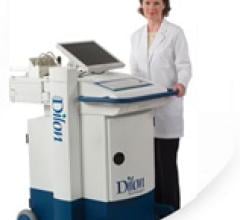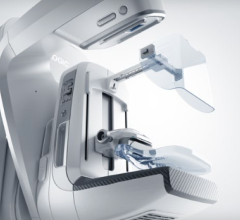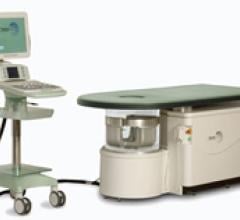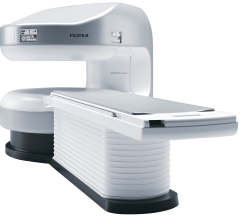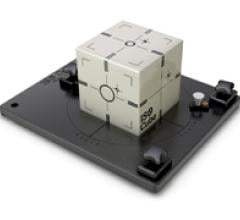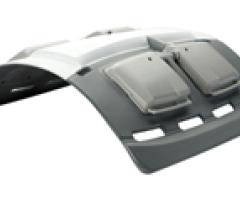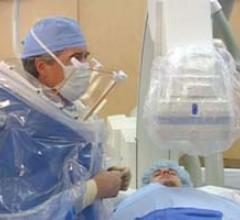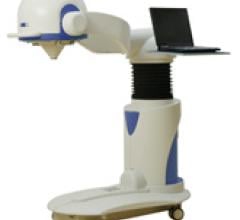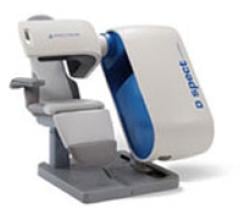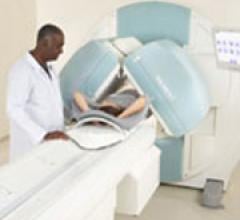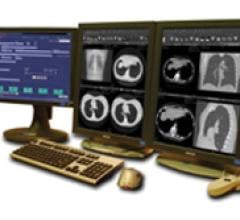April 13, 2011 – Tomophase has installed its first minimally invasive optical coherence tomography (OCT) systems at the University of Texas Medical Branch (UTMB) in Galveston, Texas.
April 13, 2011 – The Wellcome Trust has awarded a Strategic Translation Award to GE Healthcare for research into the potential use of magnetic resonance imaging (MRI) for newborns at high risk of brain injury. This marks the first time GE Healthcare will collaborate with Wellcome Trust to extend the reach of MRI technology.
April 13, 2011 – The U.S. Department of Energy has highlighted Dilon Diagnostics as a success story in the field of medical technology and innovation for commercializing the technologies of the national laboratories. According to the government agency, Dilon and similar entrepreneurs, "build the new industries of the 21st century, and help solve some of our toughest global challenges."
While most women understand the importance of health screenings, an estimated 72 million have missed or postponed a ...
April 13, 2011 – The Imaging e-Ordering Coalition is encouraging Medicare officials to look to existing clinical decision support tools to reduce costs, increase efficiency, support appropriate use and improve quality of care in diagnostic imaging.
April 12, 2011 – TechniScan's breast ultrasound technology and clinical results will be featured at the American Institute of Ultrasound Medicine's annual conference in New York this week. The highlights will include the latest results from an ongoing clinical study using the company’s Warm Bath Ultrasound (WBU) technology.

SPONSORED CONTENT — Fujifilm’s latest CT technology brings exceptional image quality to a compact and user- and patient ...
April 12, 2011 – A new online network for physicians has gone live. Quentry, from Brainlab, provides the freedom to access, control and share diagnostic imaging from anywhere within a secure clinical platform. The network debuted that the AANS Annual Scientific Meeting in Denver, Colo.
Fujifilm’s APERTO Lucent is a 0.4T mid-field, open MRI system addressing today’s capability and image quality needs ...
April 12, 2011 – The time spent on verifying the accuracy of a localized radiation treatment system should never be a hindrance to the delivery of quality treatment. The ISO Cube Daily QA Phantom, by CIRS, is an economical, accurate and easy-to-use means of performing daily system checks.
April 11, 2011 – The Society for Imaging Informatics in Medicine (SIIM) will host its 2011 annual meeting June 2–5, in Washington, D.C. SIIM 2011 offers an ideal balance of education and scientific sessions, exhibit hall hours and networking opportunities, with dynamic interaction between practitioners, thought leaders and vendors.
April 11, 2011 – Are You Dense, a non-profit breast cancer organization, has announced a partnership with U-Systems to increase awareness of dense breast tissue and its significance in the early detection of breast cancer. Are You Dense founder Nancy M.
SPONSORED CONTENT — Fujifilm’s latest CT technology brings exceptional image quality to a compact and user- and patient ...
April 11, 2011 – New evidence-based guidelines to help healthcare providers choose the most appropriate medical imaging exam are now available via the latest version of the American College of Radiology (ACR) Appropriateness Criteria.
April 11, 2011 – The U.S. Food and Drug Administration (FDA) has cleared a series of surface coils designed for use with a wide bore magnetic resonance imaging (MRI) system. GE Healthcare’s GEM (Geometry Embracing Method) Suite, used with the Optima MR450w 1.5T system, helps reposition patients less often and covers more anatomy.
To prevent physician fatigue and back pain associated with wearing protective lead aprons in the cath lab, the ZeroGravity Radiation Protection System offers increased radiation protection without weighing down the user. Using a ceiling suspended gantry system, no weight is placed on the body of the interventionalist and it allows for smooth movement along the X, Y, Z axis.
SPONSORED CONTENT — EnsightTM 2.0 is the newest version of Enlitic’s data standardization software framework. Ensight is ...
A U.S.-Egyptian research team has uncovered the earliest documented case of coronary atherosclerosis in a princess who died in her early 40s and lived between 1580 and 1550 B.C.
April 8, 2011 – Carestream Health’s new PACS module delivers embedded critical results notification and is available on all new orders and as an upgrade for Carestream PACS version 11.0 and higher. The new critical results module enables U.S. facilities with older RIS systems to meet JCAHO requirements for tracking the reporting and receipt of critical clinical findings.
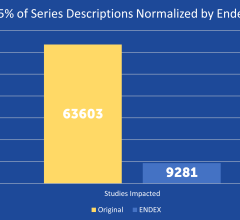
SPONSORED CONTENT — EnsightTM 2.0 is the newest version of Enlitic’s data standardization software framework. Ensight is ...
The U.S. Food and Drug Administration (FDA) this week released its February list of device and technology premarket approvals (PMA), product development protocols (PDP), supplement and notice decisions. To review the listing, visit: www.fda.gov/MedicalDevices/ProductsandMedicalProcedures/DeviceApprovals…
April 8, 2011 – The U.S. Food and Drug Administration (FDA) has cleared a next-generation compact gamma camera. MedX’s T-Quest includes enhanced thyroid imaging and features expanded imaging capabilities to perform parathyroid, sentinel node, MUGA, gastric emptying, hepatobiliary, bone spots and other small organ studies.
April 8, 2011 – Spectrum Dynamics has installed the second D-SPECT (single photon emission computed tomography) system using cadmium zinc telluride (CZT) nuclear imaging detectors. The new detectors enable a new generation of high resolution, low-dose nuclear cameras.
April 8, 2011 – At the American College of Cardiology (ACC) Annual Scientific Meeting in New Orleans, Siemens Healthcare demonstrated how users of nuclear imaging systems can use its IQ•SPECT to help reduce the length of imaging protocols.
April 8, 2011 – Medical facilities in the U.S. Army Pacific Regional Medical Command will install Fujifilm’s Synapse PACS picture archive and communication system. The system will be installed at two locations in Korea: the Brian Allgood Army Community Hospital in Seoul and the Osan Air Base.
April 7, 2011 – Saint Barnabas Health Care System (SBHCS), New Jersey’s largest healthcare delivery system, has selected McKesson to replace its multiple legacy medical imaging solutions. SBHCS plans to implement the Horizon Medical Imaging picture archiving communications system (PACS) to integrate patient data and images from multiple modalities across its multi-facility health system.

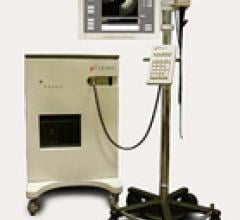
 April 13, 2011
April 13, 2011 
